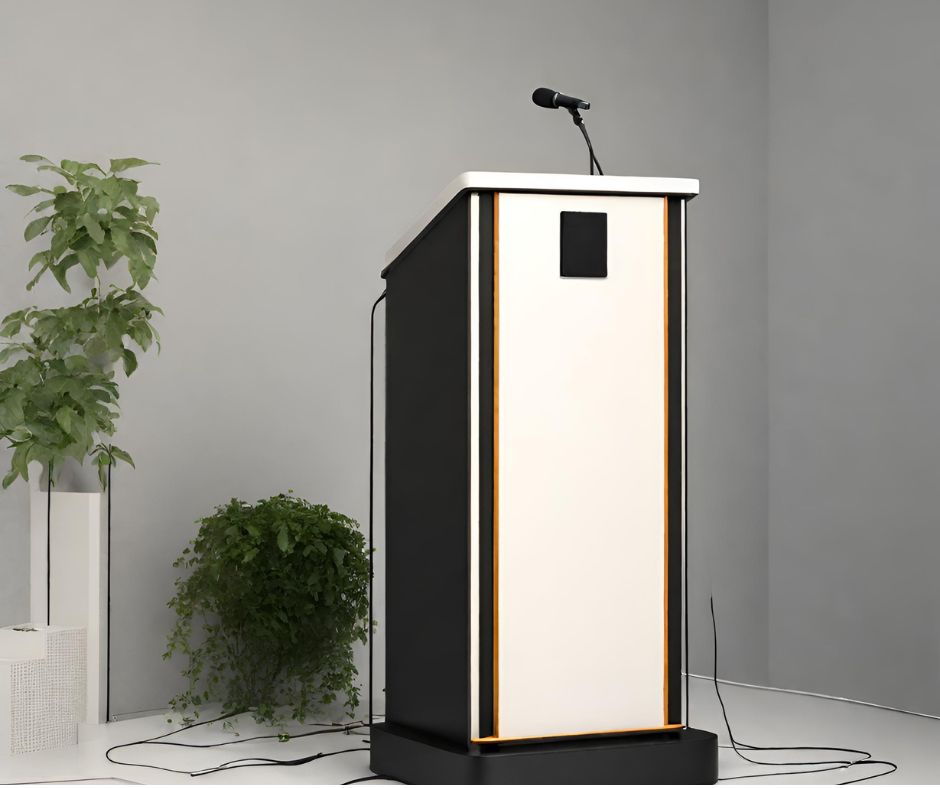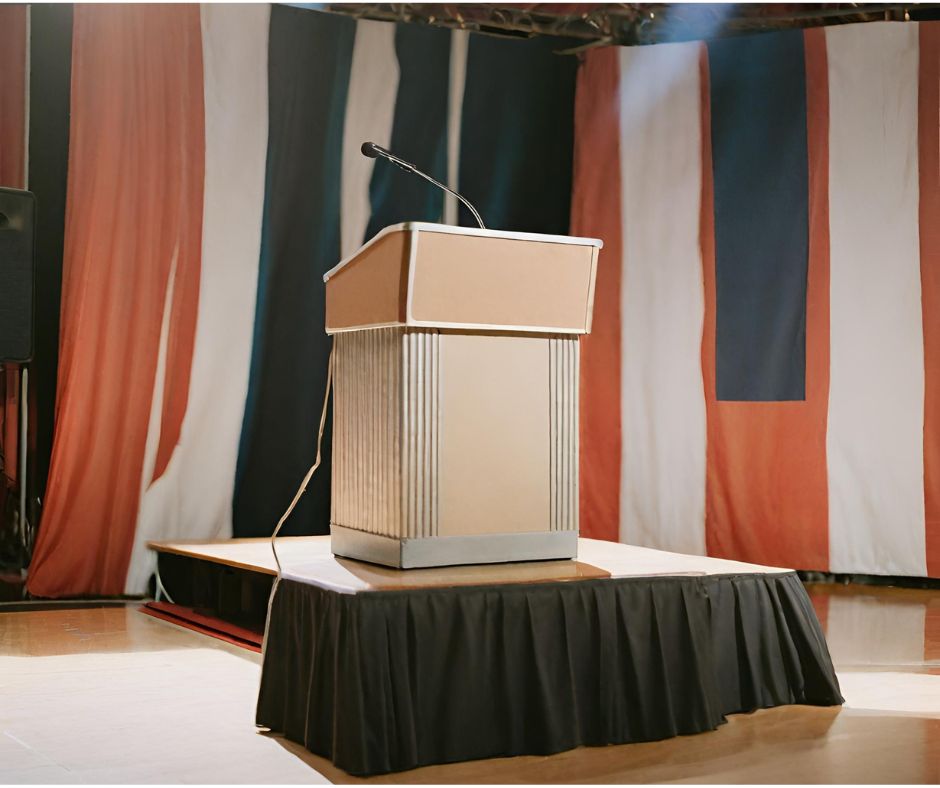The Complete Guide to Podiums & Lecterns

Chances are that if you work at a university, attend church, or can regularly be seen in a courtroom, you've encountered a lectern or podium. If you are now in the process of needing one for your business, let our full guide to lecterns and podiums give you the information you need to know in order to make the best purchasing decision. 
What is a Lectern?Most lecterns consist of a stand with a slanted top that can hold books, a laptop, or notes for a presentation. It is often used in churches, classrooms, lecture halls, and other public speaking settings as a focal point for those giving presentations. They can be simple and functional, ornately decorated, and even have features like microphones, lights, and storage compartments. Portable lecterns are frequently used by traveling speakers or in settings with limited space. 
Podium DefinitionA podium can have several definitions, depending on the context, but the most relevant here is that it is a small, raised platform used in professional situations on which someone stands to give a speech, conduct an orchestra, or receive an award. 
What is the Difference Between a Podium and a Lectern?The terms "podium" and "lectern" are often used interchangeably, which is fine in many cases. However, there are some differences between the two: Podium:
Lectern:

The Main DifferencesPodiums focus on elevating the speaker during a presentation, while lecterns focus on providing a reading surface for the speaker. Some podiums incorporate lecterns as part of their design, offering both elevation and a reading surface during an event. Podiums can have a flat or slanted top surface, while lecterns almost always have a slanted top surface. As you can see, the differences are almost minor, which is one reason the terms are so often used interchangeably. 
What are Podiums and Lecterns Used For?Both a podium and a lectern serve a variety of purposes but with slight differences. Here are some of their various uses: Podiums:

Lecterns:

What is the Standard Size of a Podium?While there's no "standard" size for a podium, there are some common dimension ranges that can give you an idea of the general sizes available. Fixed-height podiums typically range from 45 to 48 inches (114 to 122 cm) and can accommodate people of various heights comfortably. Adjustable-height podiums offer flexibility, varying from 30 to 56 inches (76 to 142 cm), which can also cater to a wider range of users and situations. The top surface width is around 20 inches (51 cm) and provides ample space for laptops or other materials. The depth is around 14 inches (36 cm), which helps prevent items from falling off. The base varies depending on the design but is typically square or rectangular, ranging from 20 to 24 inches (51 to 61 cm) on each side. Ultimately, the "ideal" size depends on your specific needs and preferences. It's important to choose a podium that provides a comfortable speaking height, plenty of surface area, and will serve the needs of your intended use. 
Where are Podiums and Lecterns Used?As previously mentioned, podiums and lecterns have a wide range of uses across various settings.

What are the Different Types of Podiums and Lecterns?Podiums and lecterns come in a variety of shapes, sizes, and styles, each serving a variety of settings. Here are some common types:

What Materials Are Used to Make Podiums and Lecterns?Podiums and lecterns can be crafted from a variety of construction materials, each with its own unique advantages and visual appeal. Here are the most common: Traditional Materials:
Modern Materials:
Other Materials:

Additional ConsiderationsUltimately, the best podium or lectern depends on your specific needs, preferences, and budget. By considering the various options and their pros and cons, you can make an informed decision that suits your requirements perfectly. Check out our options here.
More From This Author
|